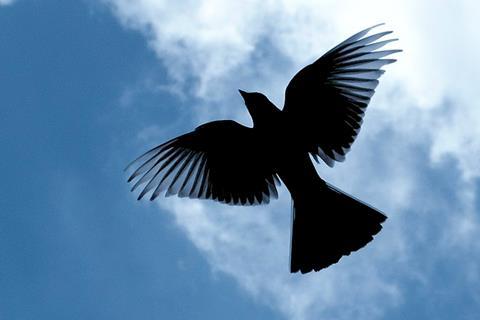Ticks travel light, but they carry pathogens with them. When they parasitize migrating birds, these journeys can take them thousands of miles away from their usual geographic range.

Historically, they haven’t been able to establish themselves, due to unsuitable climate conditions at the other end of their long journeys. But now, thanks to the climate crisis, it’s getting easier for ticks to survive and spread, potentially bringing novel tick-borne pathogens with them.
READ MORE: West Nile virus emergence and spread in Europe linked to agricultural activities
READ MORE: Magnetic bacteria could be key to the miraculous mystery of migration
“If conditions become more hospitable for tropical tick species to establish themselves in areas where they would previously have been unsuccessful, then there is a chance they could bring new diseases with them,” said Dr Shahid Karim of the University of Southern Mississippi, lead author of the article in Frontiers in Cellular and Infection Microbiology.
Hitch-hiking ticks
Ticks are very effective disease vectors, connecting humans and domestic animals to diseases carried in wild reservoirs like Lyme disease, and parasitizing birds — especially migratory birds — allows them to travel very long distances. The changes to global temperatures caused by the climate crisis are now making it easier for some ticks to establish themselves as invasive species. Establishment can be very rapid: for example, the Asian long-horned tick was first detected in New Jersey in 2017 and has since been found in 14 other states.
“Geographic distribution is changing very rapidly in many tick species,” said Dr Lorenza Beati of Georgia Southern University, a coauthor of the study. “For some migrating exotic ticks, global warming may create conditions at their northern destination that are similar to their usual range. If warmer climatic conditions are combined with the presence of suitable vertebrate hosts for all tick life stages, the chance of establishment is going to increase.”
To investigate tick dispersal through migrating birds, scientists set up nets at six locations where birds stop to rest along the northern Gulf of Mexico. Each bird was ringed with a band carrying an identification number, measured, and examined to check its physical condition and look for ticks. When ticks were found, these were removed and preserved for later DNA analysis to confirm the species and identify the micro-organisms they carried.
Mapping bird species
The scientists divided the birds into three categories — residents, short-distance migrants, and long-distance migrants – and mapped out the different species’ geographic distributions to understand where they could have picked up ticks. This highlighted just how far ticks could be carried: mean dispersal distances rose as high as 5000km.
However, parasitism turned out to be relatively low. Nearly 15,000 birds were sampled, almost 2,000 of them more than once, yet only 421 ticks were collected from 164 birds. Although 18 different species of tick were identified — including several neotropical species not established in the US — just four species accounted for 81% of the ticks identified by the scientists. Short-distance migrants carried more ticks than long-distance migrants.
Bacteria under the microscope
The scientists then analyzed the bacteria carried by the ticks. The most common bacteria were Francisella bacteria, which are endosymbionts that help ticks function. Higher levels of Francisella bacteria in a tick have previously been associated with lower levels of Rickettsia or Cutibacterium.
The second most abundant bacteria were Rickettsia species, which could indicate that they have a symbiotic relationship with ticks which is currently unknown to us. Parasitizing migrating birds, which travel long distances, demands significant energy expenditure from the ticks attached to the birds: it may be that the Rickettsia species help them cope somehow. Some species of Rickettsia can cause diseases in humans, including spotted fevers, but we don’t yet know if invasive species of tick are likely to transmit these diseases to humans.
Tick dispersal
To understand the full impact of bird-assisted tick dispersal, the scientists explained, we need more research. It’s especially important to find out whether birds act as reservoirs by carrying tick-borne diseases when they aren’t hosting ticks.
“Not only could these ticks bring new pathogens, but if they manage to establish themselves in the US, they could become additional vectors of pathogens already present in this country or maintain pathogens in wildlife reservoirs which can then become sources of infection,” said Karim. He recommended that people protect themselves with insect repellent and check themselves for ticks after walking in tick-infested areas.







No comments yet